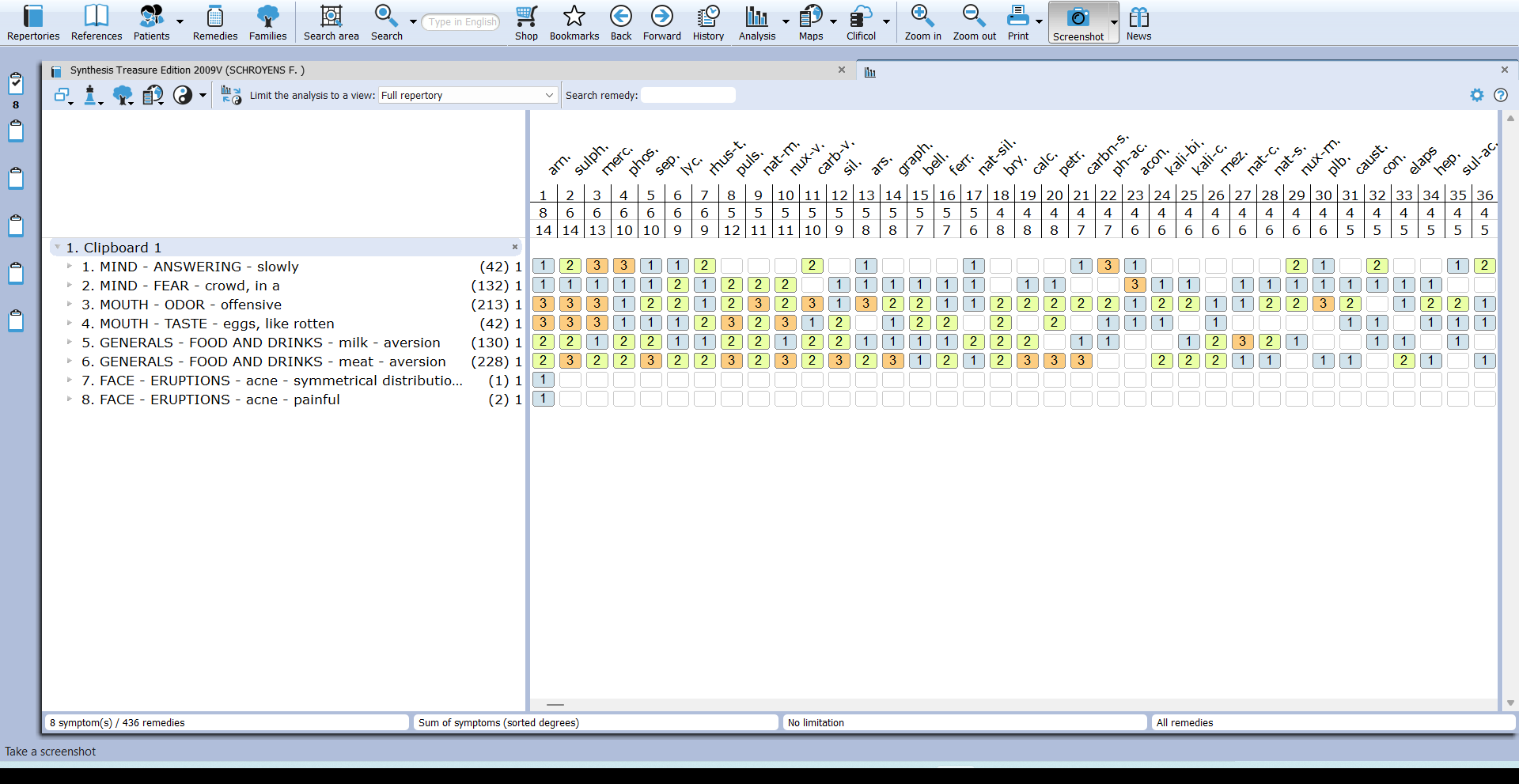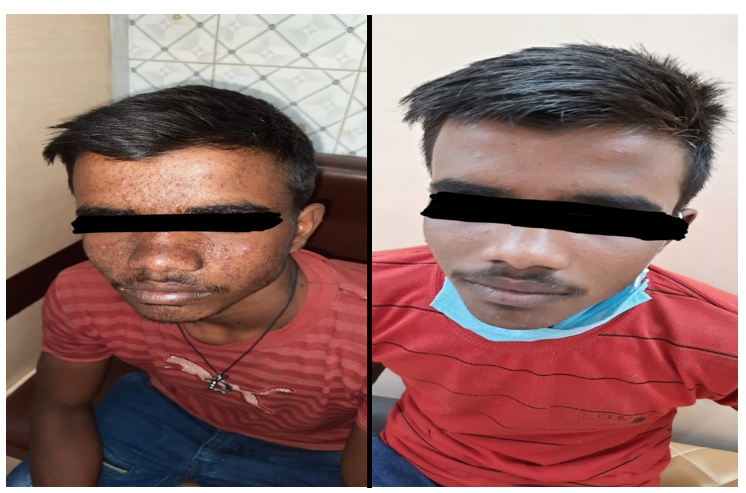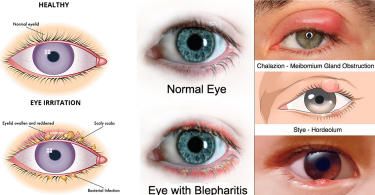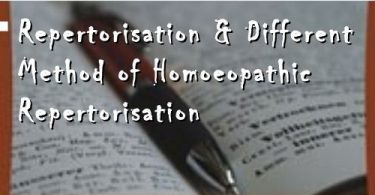
Abstract:
Acne vulgaris is a common inflammatory skin disorder of the pilosebaceous unit. Acne vulgaris is a common skin disorder affecting societies worldwide and results in major health care costs and significant morbidity to severely affected individuals. Nowadays, most of the people use to take alternating mode of treatment but it only palliates the symptoms, on the other hand homoeopathic mode of treatment will provide curative result. The selection of remedy is based upon the theory of individualization and symptom similarity by using holistic approach. Here is a case from the ongoing treatment of acne vulgaris undergoing prescription Arnica montana. The case was followed up regularly at every month for about 10 months, result is disappearance of acne vulgaris which is evident from the photographs.
Keywords: acne vulgaris, homoeopathy, Arnica montana, individualisation
Introduction:
Acne vulgaris is a chronic inflammatory disease of the pilosebaceous unit resulting from androgen-induced increased sebum production, follicular hyperkeratinisation, inflammation, and bacterial colonisation of hair follicles. Acne vulgaris is one of the most common skin diseases and affects mostly adolescents and young adults without gender difference. It predominantly affects body areas rich in of pilosebaceous glands such as the cheeks, nose, forehead and chin. It is also present on the upper part of the chest, shoulder and back and occasionally seen on the thighs and buttocks. It is usually bilaterally symmetrical. Acne is characterised by different types of lesions. The clinical lesions are non-inflammatory (closed and open comedones) and inflammatory lesions (papules, pustules and nodules). In severe acne, nodules may extend over areas and may be remarkably deep with very little surface involvement in between these nodules, sinus formation may also occur, with devastating cosmetic effects. The deeper inflammatory lesions are often associated with scarring. Facial scarring, usually pitted is a common sequel of acne. Sebaceous activity is predominantly dependent on androgenic sex hormones of gonadal or adrenal origin. Acne can also be triggered or worsened by, for example, ultraviolet radiation and other environmental factors, hereditary factor, premenstrual flare, dietary factors, smoking, psychogenic stress and the sedentary lifestyle. Patients with acne usually need oral antibiotics combined with topical therapies. It is commonly used therapy, although its use is limited by adverse effects, teratogenicity and other side-effects. Person suffering from acne vulgaris had significantly more depressive symptoms, more feelings of uselessness, depression, and anxiety and lower self-worth than those without acne[1],[2],[3].
HOMOEOPATHIC MIASMATIC APPROACH: In case of homoeopathic treatment, emphasis should be made on prescribing a constitutional and deep acting remedies. The skin is the mirror or the reflector of the internal stress, the internal dynamis of human being. There are important steps in dermatological diagnosis such as morphological diagnosis, clinical diagnosis, etiological diagnosis. The full history of the skin lesions can be taken more constructively after the general medical and dermatological history. The acne should never be tackled with superficial, long-acting remedies. Instead, deep acting constitutional remedies should be prescribed on the basis of totality of the symptoms. Patient should be strictly advised not to apply any local medicaments on acne[2],[3].
HOMOEOPATHIC THERAPEUTICS UNDERSTANDING of miasmatic predominance in cases of Acne Vulgaris mentioned below:- All skin eruptions are either expressions of miasmatic action. Acne vulgaris or symptoms related to this mainly cover all the three chronic miasms, i.e. psora, syphilis, sycosis[3].
| Psoric | Sycotic | Syphilitic |
| Simple acne; Papules; | Acne painful. Vesicular eruption | Hard acne. |
| Dry eruption; scratching temporarily relieves. | Skin symptoms aggravated by meat. | Skin symptoms aggravated by warmth and in summer season. |
| Anaemic, pale appearance of face. | Flat and red vesicular eruption; wine coloured patches | Copper colour of eruption. |
| Dry, dirty, unwashed appearance of skin | Skin symptoms aggravated in wet, humid weather. | Grayish, greasy and old looking appearance of skin. |
Case report :
The reported case is of 14 years old, hindu male, belonging to a middle socio-economic family who came to my clinic on 15/02/2021 with the complaints as follows:
Patient had presented with acne vulgaris on both sides of face.
Past treatment history: The patient took various treatments for the above complaints prior to this visit but got no specific relief instead the complaints got worse so, he opted for homoeopathic treatment as last hope of cure.
Past history: Chickenpox in childhood
Family history: The patient’s grandfather had diabetes mellitus and father had pulmonary tuberculosis.
Mental general: He was bit dull than average; answer slowly; fear of crowd and public place.
Physical general:
Patient had aversion to milk and meat. He was constipated with offensive urine. There is offensive odour with rotten egg like taste from mouth.
General examination: He was lean thin with earthy complexion, weight 40 kgs., height 147 cms.; blood pressure measuring 110/80 mm of Hg, pulse rate of 74/minute and respiratory rate 16/minute. On physical examination acne is present on both sides of face.
Analysis and evaluation of symptoms with miasmatic analysis[3]:
| S. No. | Symptoms | Analysis | Evaluation | Miasmatic analysis |
| 1. | Answering slowly | Mental general | ++ | Sycosis |
| 2. | Fear of crowd and public place | Mental general | ++ | Psora |
| 3. | Offensive odour from mouth | Physical general | +++ | Syphilis |
| 4. | Taste of mouth like rotten eggs | Physical general | ++ | Syphilis |
| 5. | Aversion to milk | Physical general | ++ | Sycosis |
| 6. | Aversion to meat | Physical general | +++ | Sycosis |
| 7. | Acne of symmetrical distribution | Particular | ++ | Psora |
| 8. | Painful acne | Particular | +++ | Sycosis |
Reportorial sheet:

Figure: Repertorisation form Synthesis repertory using RADAR software.
Repertorial Analysis:
1. Arnica montana- 14/8
2. Sulphur- 14/6
3. Mercurius solubilis- 13/6
4. Phosphorus- 10/6
5. Sepia officinalis – 10/6
Prescription: Repertorisation was done with the help of Synthesis Repertory from RADAR 10.0 version[4].The repertorial result showed that Arnica montana covered maximum symptoms with highest gradation. Therefore individualised single constitutional remedy Arnica Montana was selected on the basis of totality of symptoms, miasmatic analysis and in consultation with the materia medica[5],[6],[7]. Treatment was done periodically with single medicine Arnica montana with increasing higher potencies (30, 200). Potency changes and repetition were done, on the basis of homoeopathic principles and the 2nd prescription of Kentian philosophy[8]. Follow-up of the patients was assessed monthly. Improvement was found in no new acne and disappearance of acne spots, as well as in other symptoms. The patient was followed with relief of the symptoms and no complication was noted during this period.
Management plan- Use of cosmetics are to be avoided or restricted as a routine as they may act as hindrance in the way to cure.
Follow up:
| Date | Changes in signs and symptoms | Prescription |
| 22/02/2021 | Acne on face; hard, painful | Rubrum 30/thrice a day for 1 month |
| 19/03/2021 | Slightly improved | Rubrum 30/thrice a day for 1 month |
| 16/04/2021 | Acne further improved | Rubrum 30/thrice a day for 1 month |
| 24/05/2021 | No further improvement. | Rubrum 30/thrice a day for 1 month |
| 15/06/2021 | Standstill condition after progressive improvement for about 2 months | Arnica montana 200/1dose Rubrum 30/thrice a day for 1 month |
| 20/07/2021 | Improving | Rubrum 30/thrice a day for 1 month |
| 23/08/2021 | Acne improved ; no more new eruption | Rubrum 30/thrice a day for 1 month |
| 21/09/2021 | Acne completely disappeared; no new eruption | Rubrum 30/thrice a day for 1 month |
| 18/10/2021 | No acne anywhere on face. The patient is still under our observation to take care of the possibility of any relapse in future. | Rubrum 30/thrice a day for 1 month |

Conclusion:
Homoeopathy is one of the safest modes of treatment of skin problems, including Acne vulgaris. In homoeopathy, the patient is treated as a whole not by the name of the disease. Each and every case is treated on the basis of individuality of the patient by annihilating the disease from root rather than suppression of the disease symptom. The most important thing to be always kept in our mind that the patient should be treated with internal medicine only, not by any kind of external application merely or along with the internal medicine. Homoeopathic medicine can cure the skin diseases naturally, permanently and gently, and in the above case with the help of homoeopathic medicine, Acne vulgaris was completely cured without any scar or any side effects.
Reference:
- Williams H C, Dellavelle Robert P, Garener Sarah. Acne Vulgaris. The Lancet. 2012 January 28; 379(9813): p-361-372. Available from: https://doi.org/10.1016/S0140-6736(11)60321-8 [Accessed on 09/09/2022]
- Master F J. Skin Homoeopathic Approach to Dermatology. Second revised edition. New Delhi: B. Jain Publisher (P) LTD.;2006. p.657-684.
- Gupta R, Manchanda RK. Textbook of dermatology for homeopaths. Fourth edition. New Delhi: B. Jain Publisher (P) LTD.;2011. p.121-126.
- Banerjea SK. Miasmatic Prescribing. Second extended Indian edition. New Delhi: B. Jain Publisher (P) LTD.;2010. p.230-234.
- Radar Synthesis Computer Repertory, Version 10; London: Archibel Homoeopathic Software.
- Allen HC, Allen’s Keynote Rearranged & classified, 10th ed. New Delhi: B. Jain publishers (P) Ltd.; 2013.
- Boericke W. Boericke’s New Manual Of Homoeopathic Material Medica & Repertory, LPE ed. New Delhi: B. Jain publishers (P) Ltd.; 2014.
- Hahnemann S, Organon Of Medicine, 5th & 6th ed. New Delhi: B. Jain publishers(P) Ltd.; 2016.
- Kent JT. Lectures on homoeopathic philosophy. LPE ed. New Delhi: B. Jain publishers (P) Ltd.;2002. p.224-242.
ABOUT THE AUTHOR:
Dr Anuj Kumar, M.D. (Hom.)
Asst. Professor Department of Physiology
Dr. Halim Homoeopathic medical college & hospital, Darbhanga (Bihar)




